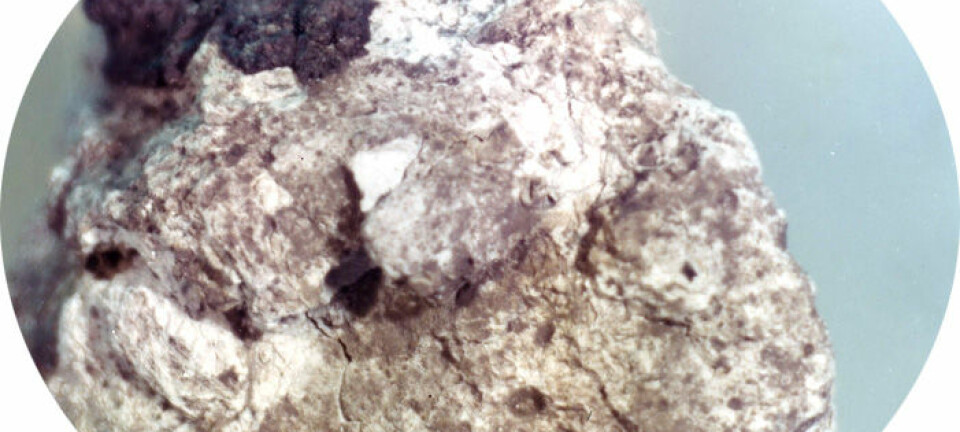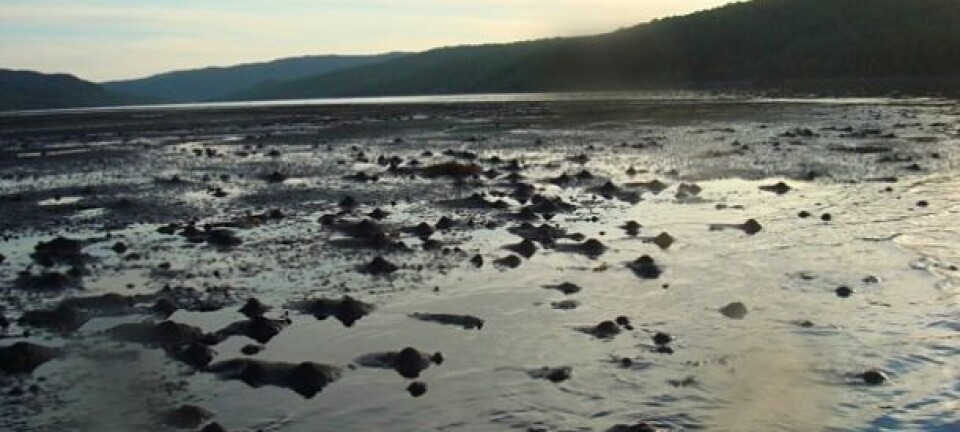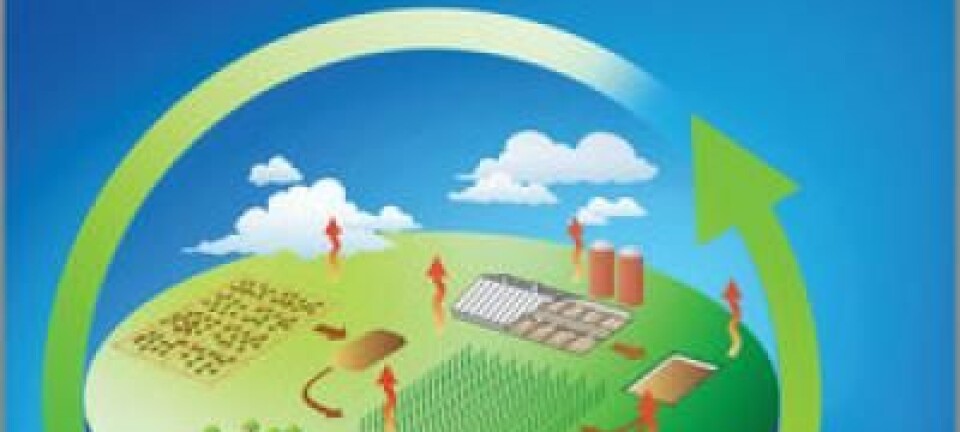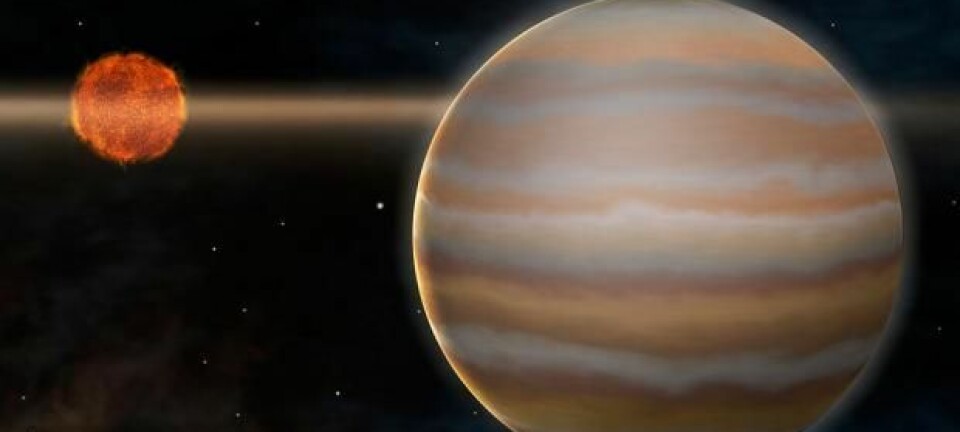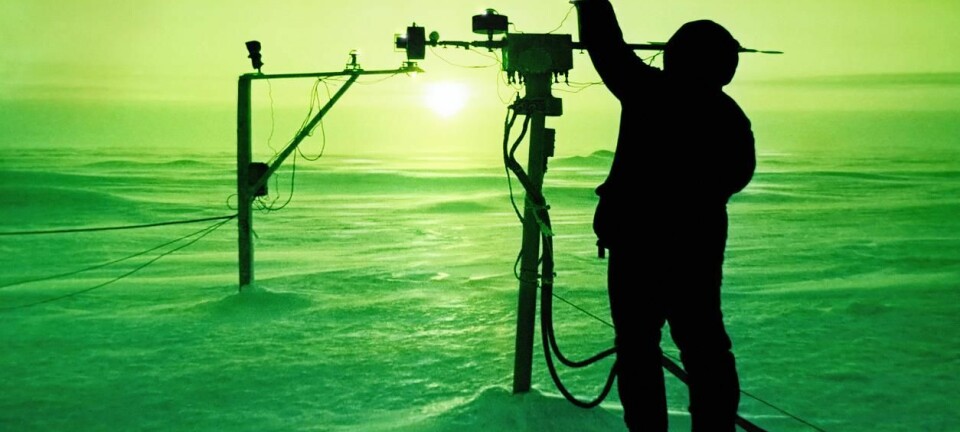
Danish scientist: lunar mining mission just a few years away
The Moon is full of rare minerals and new energy forms that can be used on Earth, says a Danish scientist who is working on getting mining companies to the moon in just a few years.
If Helium-3 could be mined on the Moon, filled onto twenty spaceships and shipped to Earth, it would be enough to cover Earth’s energy needs for an entire year.
That’s the message from space technology specialist Professor John Leif Jørgensen, who is collaborating with a private American company to land and mine on the Moon in just a few years.
“There are various minerals and raw materials on the moon that we are running out of on Earth. So it’s very interesting to do mining on the Moon -- there is something to be gained and money to be made, and there are already a number of companies that are hoping to go,” says Jørgensen, who is Professor and Head of Measurement and Instrumentation at the National Space Institute at the Technical University of Denmark, DTU.
The possibilities of private mining on the Moon is one of the topics that were debated at this year’s European science conference ESOF in Copenhagen.
“We’ll fly up there in a year and half”
The commercial race to find methods to mine the Moon’s resources is already in full swing.
Jørgensen is collaborating with a private American space travel company that he is helping develop a sensor that can ensure a soft landing on the Moon.
“We’re flying up there with the first lander in about a year and half. If all goes according to plan, we imagine that we’ll have developed it into a commercial business within four or five years.”
“There’s already a number of mining companies that are ready to take on the mining task -- they’re the ones who know how to harvest the minerals once we get there,” says Jørgensen.
Google might pay for Moon landing
Jørgensen doesn’t want to divulge the name of the American company, but he says that it takes part in the so-called Google Lunar X Prize competition.
Google Lunar X Prize is sponsored by the internet company Google and is described as the “largest international incentive-based prize of all time”, as there are millions of dollars to be won for privately owned space ships that manage to land on the Moon and send pictures back to Earth.
Several of the companies that participate in the race to win the Google Lunar X Prize millions have declared that they have long term plans to start mining on the Moon.
“We’re hoping to carry out efficient flights to the Moon and back. In that way we can ship robots to the Moon to mine the materials. But for that to be financially viable, moon travel needs to be sufficiently cheap and efficient,” says Jørgensen.
No longer pure science fiction
The idea of mining on the Moon has existed for decades, but according to Jørgensen it is only now that the technology is so advanced -- and cheap -- that it’s no longer pure science fiction.
“The price of travelling into space has been drastically reduced in recent years. Following privatisation of large parts of space travel, the booster rockets that launch space ships into space have for instance gone down to a third of what it was in the past,” says Jørgensen.
The large space travel organisations such as NASA and the European ESA are also laying plans to harvest valuable materials on the Moon.
ESA-scientist: it will take decades
However, according to Bernard Foing, the ‘father’ of ESA’s moon mission SMART 1, it will be a lot longer before raw materials can be shipped back to Earth on a large scale.
“In order for it to be financially viable to ship something back to Earth, it needs to be valuable cargo.”
“It has to have financial worth, and because of that most of the raw materials on the Moon will have to be utilised up there at first,” says Foing, who is the Executive Director of the International Lunar Exploration Working Group (ILEWG), a forum sponsored by the world’s space travel organisation for international collaboration on the exploration and use of the Moon.
Mining of Moon-data is already well underway
However, according to Foing what he refers to as ‘data mining’ on the Moon is already happening -- and it will expand in the years to come.
By ‘data mining’, Foing means the commercial use of data such as videos, pictures and information that is sent down to Earth.
“The first businesses have already started. Some companies have rented satellites and make money from sending pictures down to Earth. The next step will be the teams from Google Lunar X Prize, which will send small lunar landing modules to the Moon and market the experience of being on the Moon by sending videos home,” says Foing.
According to him, there are four natural steps to undertaking mining on the moon:
-
Send space ships to the Moon that can carry out ‘data mining’, e.g. send pictures, videos, and information down to Earth.
-
The next step would be to send small samples from the Moon down to Earth for analysis to bring new and valuable knowledge to scientists and companies.
-
Build a village with robots and a few people that can mine matter from the Moon. To begin with, these matters should be used for things like building houses, making energy or getting water for use on the Moon.
- The final phase of mining on the Moon will be to carry out mining on a grander scale and send rare minerals and raw materials down to Earth. According to Foing it will be another 25 years before we reach this phase.
“We’re building rockets”
Foing points out that the preparations for all phases of lunar mining have already started -- both in the private sector and in the international space travel organisations.
“The main route to the Moon is rockets, and we’re building those now. That will mean that we can place lunar landing modules, vehicles and instruments on the Moon, and a number of governments are doing that now.”
“For example, I was the father of ESA’s satellite SMART 1, which mapped the Moon with a view to learning more about it and exploring its resources. The next step is to place a lunar landing module up there and analyse the Moon-dirt,” says Foing.
He mentions that the Russian space travel organisation will send landing modules to the Moon in 2017 and 2019, and the Chinese space travel organisation sent a landing module to Moon on December last year -- with plans to bring back samples in 2017.
What’s to gain on the Moon?
But what are the matters that space travel organisations and privately owned companies are so eager to harvest from the Moon?
One of the materials that are mentioned in connection with lunar mining is Helium-3.
Helium-3 is an isotope of the element Helium that is very rare on Earth, but not on the Moon. Unlike Earth, which is protected by its atmosphere and magnetic field, the Moon has been bombarded with large amounts of Helium-3 from the solar wind.
“The amount of Helium-3 found on earth is minuscule -- next to nothing -- but it’s available on the Moon, and it would be relatively easy to mine up there,” says Jørgensen.
“The reason why Helium-3 is so attractive is that it can be used to make energy in a very simple way. Twenty spaceships full of Helium-3 is enough to cover the Earth’s energy needs for year.”
Helium-3 could be a pure energy form
However, the technology that is to get energy from Helium-3 is not in place yet.
Nevertheless, a number of scientists are certain that Helium-3 can be used as a fuel in fusion power plants, in that way creating large amounts of energy -- without producing problematic radioactive waste products that ordinary fusion reactors create.
“With Helium-3, it’s possible to make fuel for a fusion reactor that is extremely clean and without any radioactive by-products. In the future, maybe in 50 years, the next generations might use Helium-3 as an energy form,” says Foing.
Is lunar mining legal?
But what are the disadvantages of the prospective lunar mining venture? And what does the law have to say about it? Are we at liberty to exploit the Moon?
Foing explains that the Moon falls under the so-called ‘Outer Space Treaty’, which has been signed by and ratified by more than 100 countries.
“The treaty says that the Moon isn’t owned by anyone -- no countries can own or make claims to the Moon, but everyone has the right to explore it.”
“Companies also have the right to explore the Moon -- and they must respect it and not destroy it -- but whatever they bring home from up there will be their property. This is equivalent to the laws about international waters -- nobody owns the seas, but the fish that you take from there are yours,” says Foing.
Companies could “have the whole world in a stranglehold”
However, Jørgensen thinks the legal regulations surrounding the Moon should be stiffened.
According to him, one of the disadvantages of the current rules is that they may pave the way for near-monopoly conditions for the companies that have sufficient capital to make it to the Moon.
“At the moment the Moon is public property for mankind, and that means that you are free to take whatever you want. The downside of that is that all the companies that make it to the Moon first can monopolise the raw materials, and that’s why in my opinion it’s important that everyone takes part in the adventure it could become.”
“It would be bad if gigantic companies end up controlling access to raw materials, because that would allow them to have the whole world in a stranglehold,” says Jørgensen.
The Moon could bring prosperity for everyone
Jørgensen still sees a number of positive aspects of the prospective lunar mining venture.
“The good part is that there are no people on the Moon, so mining raw materials won’t make a mess on Earth. At the same time we need minerals and raw materials on Earth, and that means that they will be more expensive.”
“But the prospective lunar mining venture will bring plenty of all of that, and that will make people on Earth richer. So in the grand scheme of things it could potentially bring prosperity for everyone on Earth, as well as a much cleaner world,” says Jørgensen.
--------------
Read the original article in Danish on Videnskab.dk
Translated by: Iben Gøtzsche Thiele
